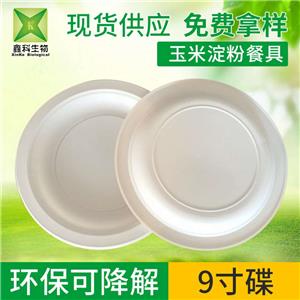-
2018-09-12150碟子
-
2018-09-13一次性環(huán)保餐具-碟子
-
2018-09-14一次性可降解餐具-270ml碗
-
2018-09-14一次性餐具-叉子
-
2018-09-14環(huán)保餐盒
生物降解的聚酯納米粒子的相關(guān)力學(xué)
聚合物納米顆粒(NPs)由于其生物降解性,生物相容性以及高度可定制的藥物加載和釋放能力而被廣泛用于生物醫(yī)學(xué)應(yīng)用。盡管有許多關(guān)于NP力學(xué)對納米生物相互作用(例如內(nèi)在化,吸收,運(yùn)輸和降解)影響的報(bào)道,但在與聚合物NP利用率相對應(yīng)的條件下,還沒有系統(tǒng)地表征聚合物NP力學(xué)。
Polymer nanoparticles (NPS) are widely used in biomedical applications because of their biodegradability, biocompatibility and highly customizable drug loading and release capabilities. Although there are many reports on the effects of NP mechanics on nano biological interactions (such as internalization, absorption, transport and degradation), there is no systematic characterization of polymer NP mechanics under the conditions corresponding to the utilization of polymer NP.
這種缺陷的根源在于,盡管原子力顯微鏡(AFM)非常適合表征納米級材料(即NP),但在生理?xiàng)l件下(例如,緩沖液中的37°C)進(jìn)行的實(shí)驗(yàn)具有挑戰(zhàn)性,需要專用設(shè)備。雖然可以使用大量測量值來推斷NP的機(jī)械性質(zhì)以了解生物學(xué)功能,但這種推斷所依據(jù)的假設(shè)是,懸浮在緩沖液中并加熱生理溫度不會顯著改變NP的力學(xué)。
The root of this defect is that although atomic force microscopy (AFM) is very suitable for characterizing nanoscale materials (i.e. NP), experiments under physiological conditions (e.g. 37 ° C in buffer) are challenging and require special equipment. Although a large number of measurements can be used to infer the mechanical properties of NP to understand its biological function, this inference is based on the assumption that suspension in buffer and heating to physiological temperature will not significantly change the mechanics of NP.
這種假設(shè)適用于某些無機(jī)NP,例如由金屬和氧化物組成的那些。此外,對具有不同機(jī)械性能的二氧化硅納米膠囊的系統(tǒng)研究發(fā)現(xiàn),吞噬作用和靶向腫瘤的過程對納米顆粒的硬度有很強(qiáng)的依賴性。
This assumption applies to some inorganic NPs, such as those composed of metals and oxides. In addition, the systematic study of silica nanocapsules with different mechanical properties found that the processes of phagocytosis and tumor targeting were strongly dependent on the hardness of nanoparticles.


生物降解顆粒研究人員認(rèn)為,盡管可生物降解的聚酯納米粒子廣泛用于藥物遞送,并且有報(bào)道稱納米粒子力學(xué)對納米生物相互作用具有強(qiáng)大的影響,但在生理相關(guān)條件下,對這些納米粒子的力學(xué)卻缺乏系統(tǒng)的研究。近年來有研究團(tuán)隊(duì)報(bào)告使用原子力顯微鏡對聚乳酸和聚丙交酯乙交酯納米顆粒的壓痕實(shí)驗(yàn)。雖然發(fā)現(xiàn)干燥的納米顆粒在室溫下是剛性的,但是發(fā)現(xiàn)它們的彈性模量在模擬的生理?xiàng)l件下(即在37℃的水中)降低了多達(dá)30倍。
Biodegradable particle researchers believe that although biodegradable polyester nanoparticles are widely used in drug delivery, and it is reported that nano particle mechanics has a strong impact on nano biological interactions, there is a lack of systematic research on the mechanics of these nanoparticles under physiological related conditions. In recent years, a research team has reported the indentation experiment of polylactic acid and polylactide glycolide nanoparticles using atomic force microscope. Although the dried nanoparticles were found to be rigid at room temperature, their elastic modulus was found to be reduced by up to 30 times under simulated physiological conditions (i.e. in 37 ℃ water).
差示掃描量熱法證實(shí)該軟化可歸因于納米顆粒的玻璃化轉(zhuǎn)變。結(jié)合機(jī)械和熱分析特性,研究了微型化,分子量和浸入水中的塑化效果??偟膩碚f,這些實(shí)驗(yàn)為實(shí)驗(yàn)家們探索聚合物納米粒子力學(xué)與體內(nèi)行為之間的關(guān)系提供了見識。
Differential scanning calorimetry confirmed that the softening could be attributed to the glass transition of nanoparticles. The miniaturization, molecular weight and plasticizing effect in water were studied by combining the mechanical and thermal analysis characteristics. In general, these experiments provide insights for experimenters to explore the relationship between the mechanics of polymer nanoparticles and their behavior in vivo.
生物降解的聚酯納米粒子的相關(guān)力學(xué)就講解到這里了,您可以來關(guān)注我們網(wǎng)站m.qylxschool.cn做有關(guān)的了解,對您后期的使用也是有幫助的!
That's all for the mechanics of biodegradable polyester nanoparticles. You can follow our website www.qiluxinke COM is also helpful for your later use!
- 上一個(gè): 玉米淀粉顆粒材料聚乳酸的使用
- 下一個(gè): 生物類可降解一次性玉米淀粉餐具廣受關(guān)注
 150碟子
150碟子 一次性環(huán)保餐具-...
一次性環(huán)保餐具-... 一次性可降解餐具...
一次性可降解餐具... 一次性餐具-叉子
一次性餐具-叉子 環(huán)保餐盒
環(huán)保餐盒
相關(guān)產(chǎn)品:





